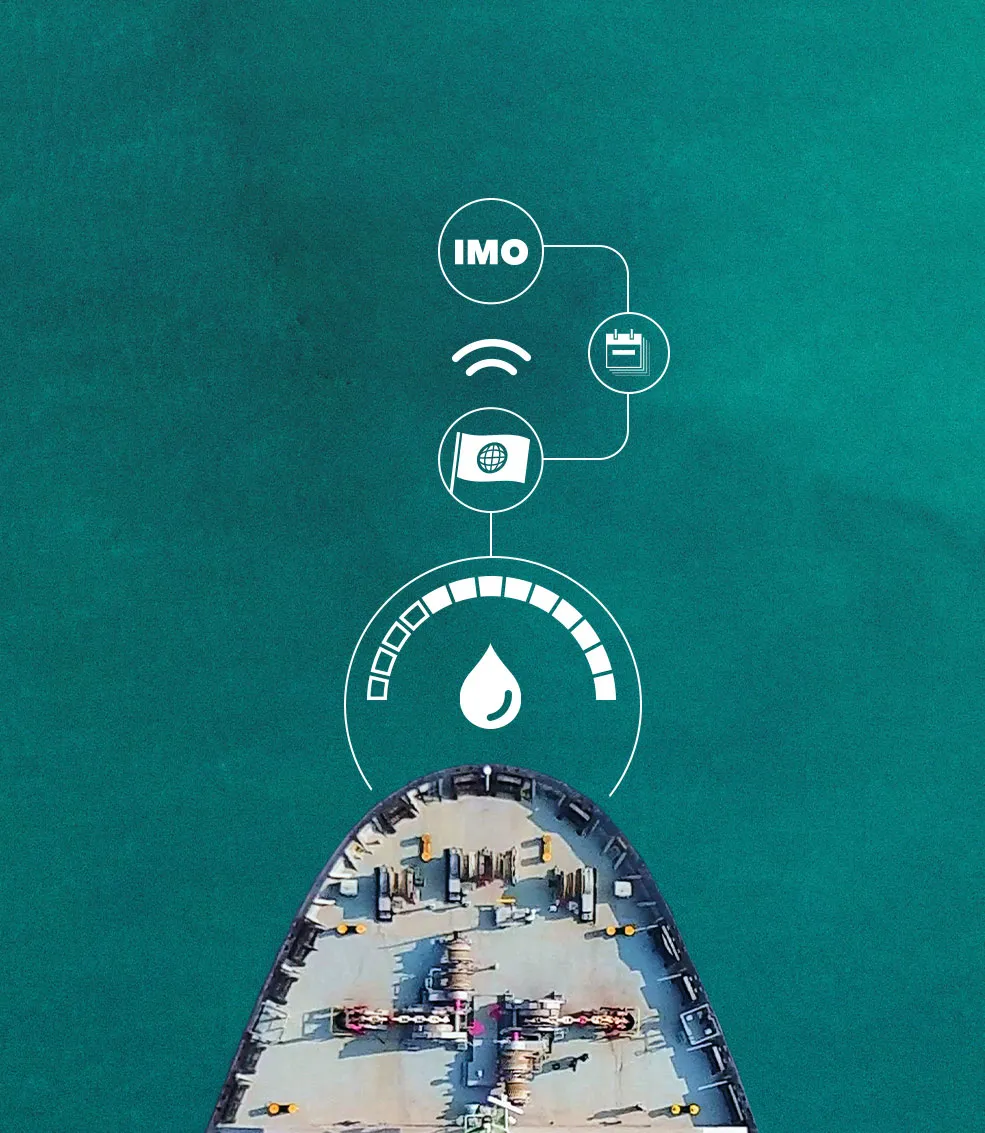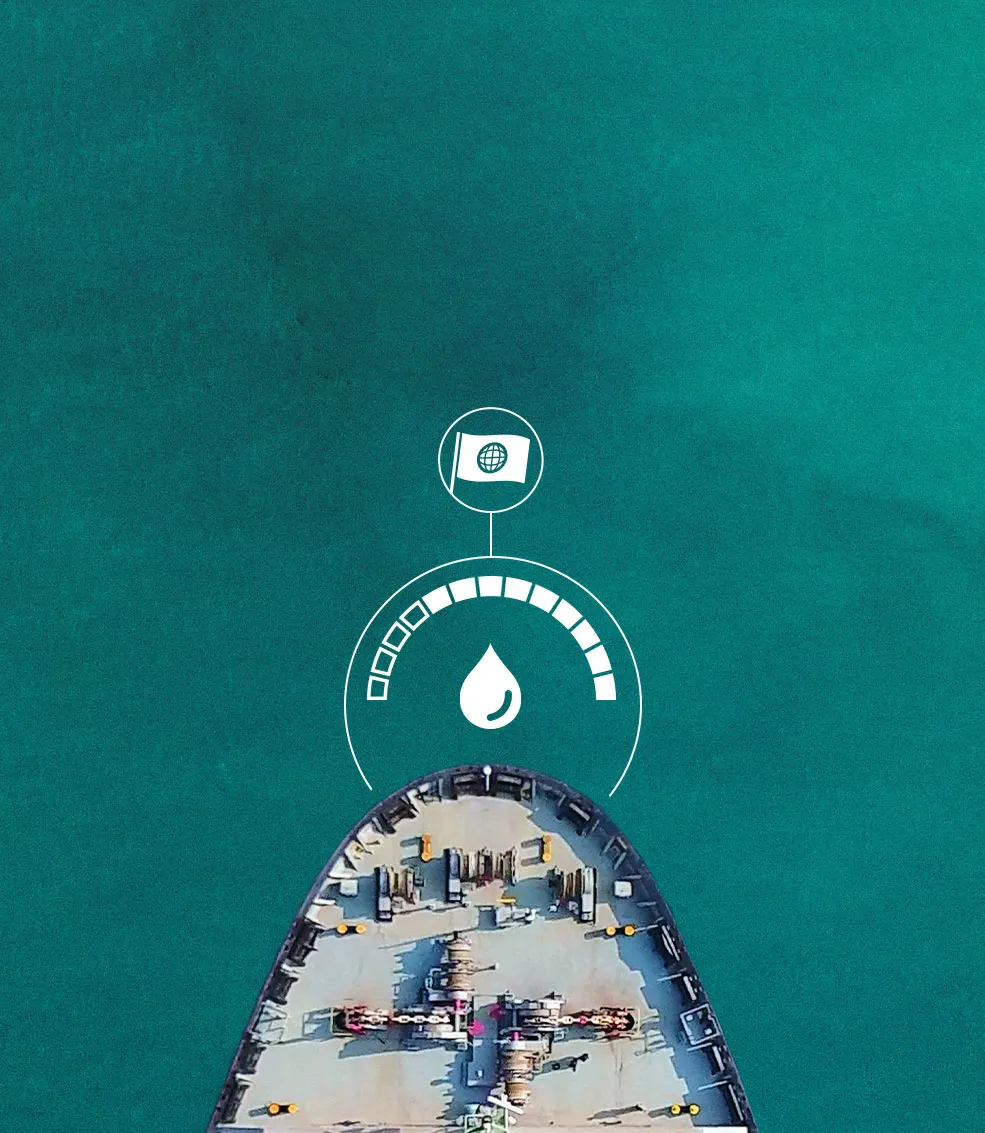Digital MRV and DCS reporting streamlines the verification process
Emissions reporting under the EU MRV and IMO DCS schemes does not have to be an onerous process. DNV GL has set up an online reporting system that lets operators of large and small fleets handle the task with ease. The newly launched Emissions Insights Dashboard can be used to benchmark emissions performance.

Different timelines add complexity
As an accredited verifier of both MRV and DCS reports, DNV GL has committed substantial resources to supporting customers of all sizes and segments in handling this additional reporting and verification obligation and avoiding typical errors, delays and financial disadvantages. To reduce complexity, DNV GL developed comprehensive online functionality that enables digital reporting for both the MRV and DCS schemes while avoiding site visits.

Two systems, one report to verifier
The good news, says Berenika Markiewicz, MRV/DCS Team Lead Digital Class Services at DNV GL, is that DNV GL, as both a verifier for the MRV Regulation and a recognized organization (RO) for the flag states, which are in charge of DCS verification, has created a single reporting process for both schemes that minimizes the effort for the ship operator. “Shipping companies submit one set of reports – their bunker details and log abstracts – to DNV GL’s online system, which automatically differentiates between the requirements of the two reporting schemes,” says Markiewicz. “And whether the customer prefers a manual data collection process or uses advanced digital technology, we only ask for typical, basic data that is routinely recorded on every vessel, whether digitally or in logbooks.”

Data quality is crucial
Markiewicz has been spearheading DNV GL’s efforts to streamline the reporting process, working closely with customers. Data quality, she says, is a core concern in making sure reports can be processed properly. “We realized, and so did our customers after the first two reporting years, that errors are frequently caused by changing crews on a ship,” explains Markiewicz. “Different captains may not have quite the same understanding of what is being reported, and cause inconsistencies. Simple typos can be an issue as well.”
The traditional approach of verifying the data only once per year meant that it was extremely difficult for customers to trace back errors to the logbooks or paper documentation on board and identify the correct information, she adds. “One of the reasons we introduced our electronic reporting process is that it allows customers to upload and review data continuously throughout the year,” says Markiewicz.

Simple data format for transmission
Data quality can only be verified if the data are submitted in the right format. “The format we use is a simple, standardized text file format that is easy to obtain,” says Markiewicz.
DNV GL customers using Navigator Insight or subscribing to the ECO Insight fleet performance management service do not have to worry about reporting raw data because periodical data transmission and reporting is already part of those services. From any ship-to-shore reporting system it is possible to arrange an export to the required format, and the data can be transferred automatically as well. For customers not using an electronic tool, DNV GL provides easy-to-use templates for data entry and submission.
“After a customer transfers a report to us, they get the automated checks online – long before the actual verification process is triggered at the beginning of the following year,” says Markiewicz. “This way they can ensure that the data quality is adequate for further processing.”
N.J. Goulandris Group, consisting of family-run companies and owning and managing 20 vessels, has been supported by DNV GL since 2018 and achieved compliance well before the deadlines. “Within the first few rounds of the digital reporting process, we managed to address and eliminate some initial data quality issues and better monitor vessel performance data as well through the online tool,” says Fotis Dalmyras, Technical Director at Andriaki Shipping Co. Ltd. “Using the DNV GL process saves us a lot of time and effort, both at the office and, most importantly, for the crew members.”

Streamlining processes through automation
“Whatever system a customer uses on board, it should allow them to record operational data that are typically required for the logbook,” says Markiewicz. “If a customer considers installing a new system – and there are many options in the market – we as verifiers will advise them so the system they choose will cover everything that is needed for verification.”
For a large shipping company like MSC, which currently operates a fleet of 560 vessels, most of which are MSC-owned, handling the MRV/DCS process can be a headache, says Pietro Gargiulo, Energy Efficiency Team Leader at MSC. Having a good overview of fleet data is critical for both internal management and especially enquiries from external stakeholders. “The DNV GL system automates a big portion of the workload and enables streamlined data upload with minimum effort,” Gargiulo confirms. “We are able to produce overall emissions data for our fleet easily using the DNV GL system, which allows us to actually go beyond compliance with the DCS data.”

Emissions Insights Dashboard provides clarity
DNV GL has just launched its new Emissions Insights Dashboard for ship operators to keep track of their data. The dashboard, available on the Fleet Status portal on Veracity, reflects all emissions data an operator has reported, both verified and still unverified. The report format with diagrams and other helpful graphical elements makes it easy to evaluate, track and compare the emissions information for fleet optimization and other decision support.
The dashboard can be used to monitor fleet performance and trends throughout the year, keep up with the Annual Efficiency Ratio, and share reports with other stakeholders. It makes it easy to identify areas for improvement and take the right steps to address them. And there is more.

Benchmarking enables competitive benefits
The digital operational information allows shipping companies to benchmark vessel performance, both within their fleets and towards the industry, as more anonymized data is made available on the platform. Benchmarking helps identify performance issues of individual ships and can build competitive advantage by demonstrating superior economic and ecological performance. “You want to be a customer of someone who is pro-environment because your own customers will value that as well,” Camilla Kjelsaas, Engineer at DNV GL and project lead of the dashboard development team, explains. “Being able to say, ‘We are the greenest’ is an important competitive differentiator.”
There may also be longer-term financial implications to digital transformation, Kjelsaas points out. “With more financial institutions signing up to the Poseidon Principles, your financial results may also depend on your emissions, which means everybody should aim for having a seamless reporting process in place and digital data available.” Lenders increasingly use DCS data and are likely to define targets for required ecological performance. “DCS data will directly influence the financial aspects of operations. For example, we can expect that vessel loans will one day depend on this data.”

Changing to DNV GL is easy
DNV GL is the first and currently the only classification society offering the convenience of digital verification services for both MRV and DCS emissions reporting. Having verified more than 10,000 MRV and DCS reports since 2019, DNV GL has built extensive expertise. “With our global footprint and a network of champions ready to assist, we can offer a smooth process for operators who wish to switch to DNV GL as their verifier,” says Markiewicz. “We will accept the plans from other accredited verifiers and don’t ask customers to create brand-new documents. A member of our team will explain how the customer can meet our requirements.”
Accreditation
DNV Group company DNV GL SE is the accredited body for EU MRV verification services as per EU Reg. 2015/757. Consequently, the EU MRV verifications and the issuance of EU MRV compliance documents will be provided by DNV GL SE as accredited body. The respective verification decisions are at the discretion of the DNV GL SE.
Fleet Portal related services such as Emissions Insights, data checks, plan generators and report generation as well as the IMO DCS verifications are provided by DNV group company DNV AS.
- StockStudio Aerials – Shutterstock.com
- The Emissions Insights Dashboard of the Fleet Status portal on DNV GL’s Veracity platform unlocks the economic value of the emissions data.
View image copyright information

